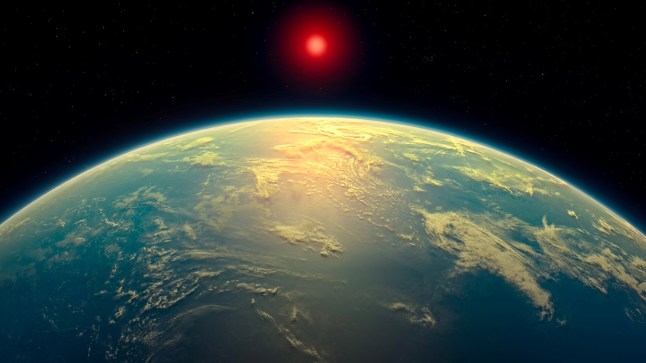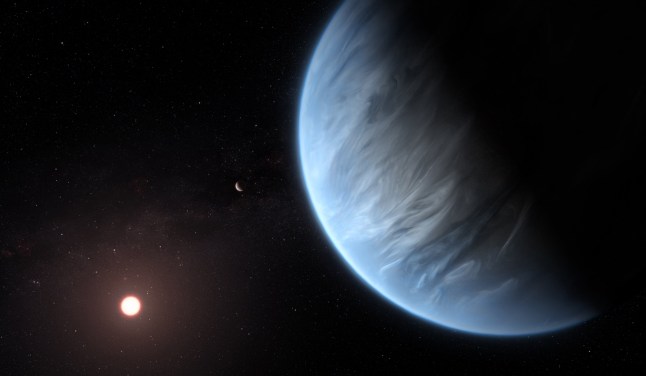To view this video please enable JavaScript, and consider upgrading to a web
browser that
supports HTML5
video
New and ‘strongest evidence yet’ has emerged suggesting that there is another world that could have life on it.
Scientists have discovered early signs that a distant planet in space called K2-18b could have some life.
The promising finding was made by the Cambridge University team studying the atmosphere
They detected signs of chemical molecules, which on Earth are produced by living organisms such as marine algae.

The scientists used the James Webb Space Telescope – the largest telescope in space armed with a high-resolution equipment that can reach further into space than its predecessor the Hubble Space Telescope.
However, the expert team stressed that more evidence is needed after the promising find.
How far is planet K2-18b?
The chemical fingerprints were of dimethyl sulfide (DMS) and/or dimethyl disulfide (DMDS), located in the atmosphere of K2-18b.
A report said: ‘While an unknown chemical process may be the source of these molecules in K2-18b’s atmosphere, the results are the strongest evidence yet that life may exist on a planet outside our solar system.’

K2-18b isn’t a short journey away – it lives around seven hundred trillion miles from Earth.
For conventional spacecraft to travel that distance, it would take possibly hundreds of years.
Why is the finding significant?
This was the first time astronomers found carbon-based molecules in the atmosphere of an exoplanet in the habitable zone of space.
Scientists suspect it could be a ‘Hycean’ planet – a habitable, ocean-covered world.
Professor Nikku Madhusudhan, from Cambridge’s Institute of Astronomy and the research lead, said: ‘Earlier theoretical work had predicted that high levels of sulfur-based gases like DMS and DMDS are possible on Hycean worlds.
‘And now we’ve observed it, in line with what was predicted. Given everything we know about this planet, a Hycean world with an ocean that is teeming with life is the scenario that best fits the data we have.’
He said there were major questions concerning the processes that might be producing the chemicals.
As with any research, it was ‘important that we’re deeply sceptical of our own results’ and that rigorous further testing was needed despite the excitement.
The prof continued: ‘Decades from now, we may look back at this point in time and recognise it was when the living universe came within reach.
‘This could be the tipping point, where suddenly the fundamental question of whether we’re alone in the universe is one we’re capable of answering.’
The possibility of alien life continues to drive scientists determined to find evidence that we are not the only living things in the galaxy.
Elsewhere in space, Nasa’s Curiosity rover found the largest organic compounds ever on Mars.
The material was discovered inside a 3.7 billion-year-old rock in a bay, which might have once been a freshwater lake.
Get in touch with our news team by emailing us at webnews@metro.co.uk.
For more stories like this, check our news page.


